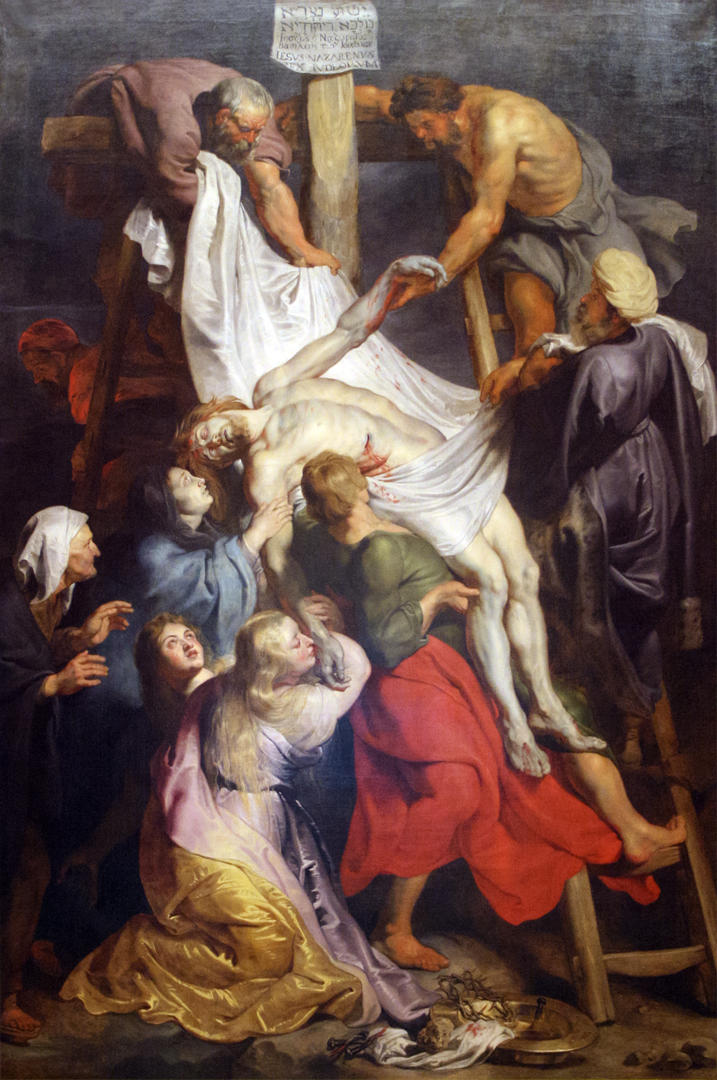Jesus is crowned with thorns and carries his cross to be crucified. In this episode we witness the way of the cross. Hear the crowd as they cheer against him. Watch as Jesus experiences the physical and psychological punishment. Stay and pray with Mary as Jesus takes his last breath on the cross. This can be a difficult episode to pray with, but powerful as we realize what Jesus goes through for our sake.
“It belongs to the Passion to ask for grief with Christ in grief, anguish with Christ in anguish, tears and interior pain at such great pain which Christ suffered for me.” - Spiritual Exercises of Saint Ignatius 203
It can be helpful to review the text of a story before you begin a contemplative exercise. Since there are so many details in the Gospels between the Last Supper and Jesus' crucifixion, we will focus on just a few moments between his trial with Pilate and his death on the cross. Free free to pick one or more accounts to reflect upon:
Use the following images if you would like some help guiding your imagination to build this scene, but only insofar as they are helpful. Please don’t feel restricted by these images. Allow your imagination to add or change details as it happens naturally for you. Don’t worry about complete historical accuracy. The point of the exercise is connection with Jesus.
Jesus is judged by Pilate before a crowd.
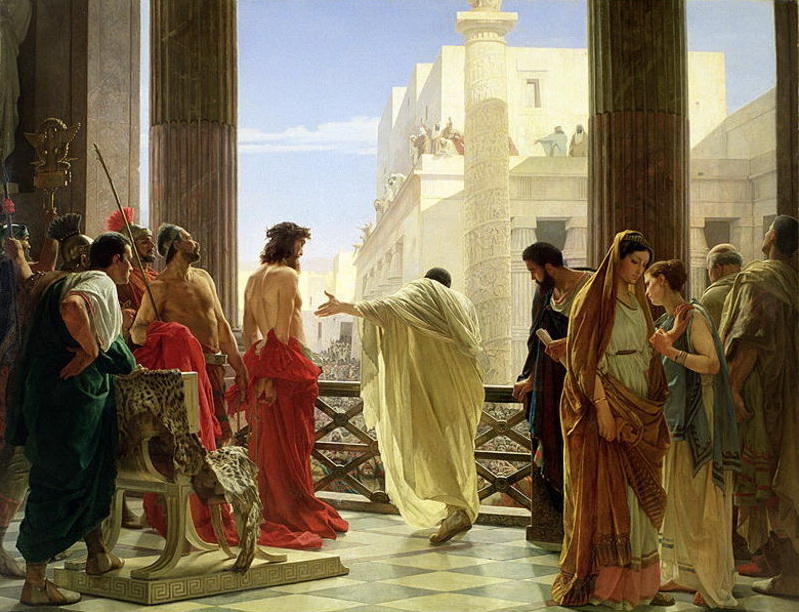
He is crowned with thorns and mocked.
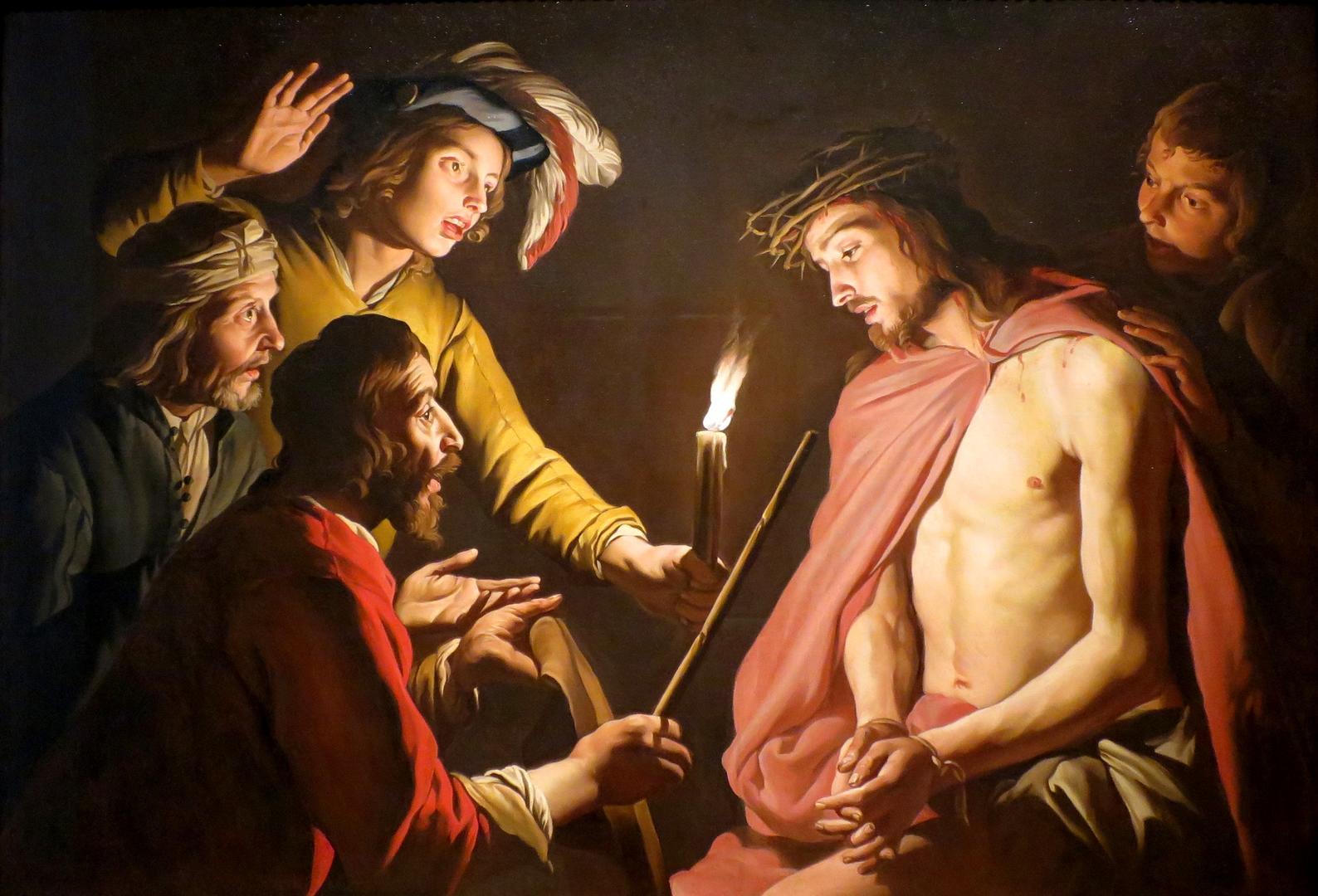
Jesus is made to carry a cross.
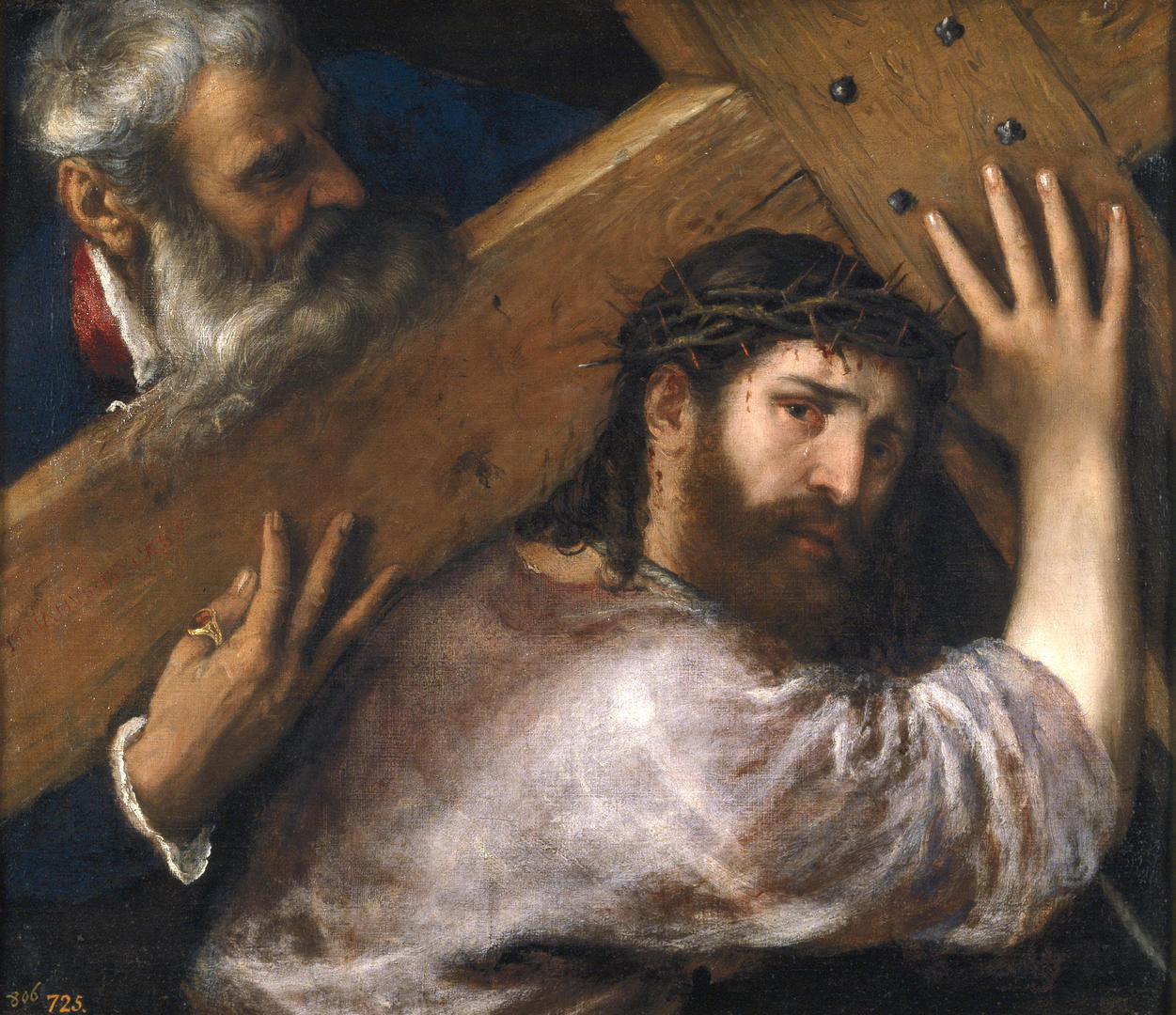
Jesus is crucified.
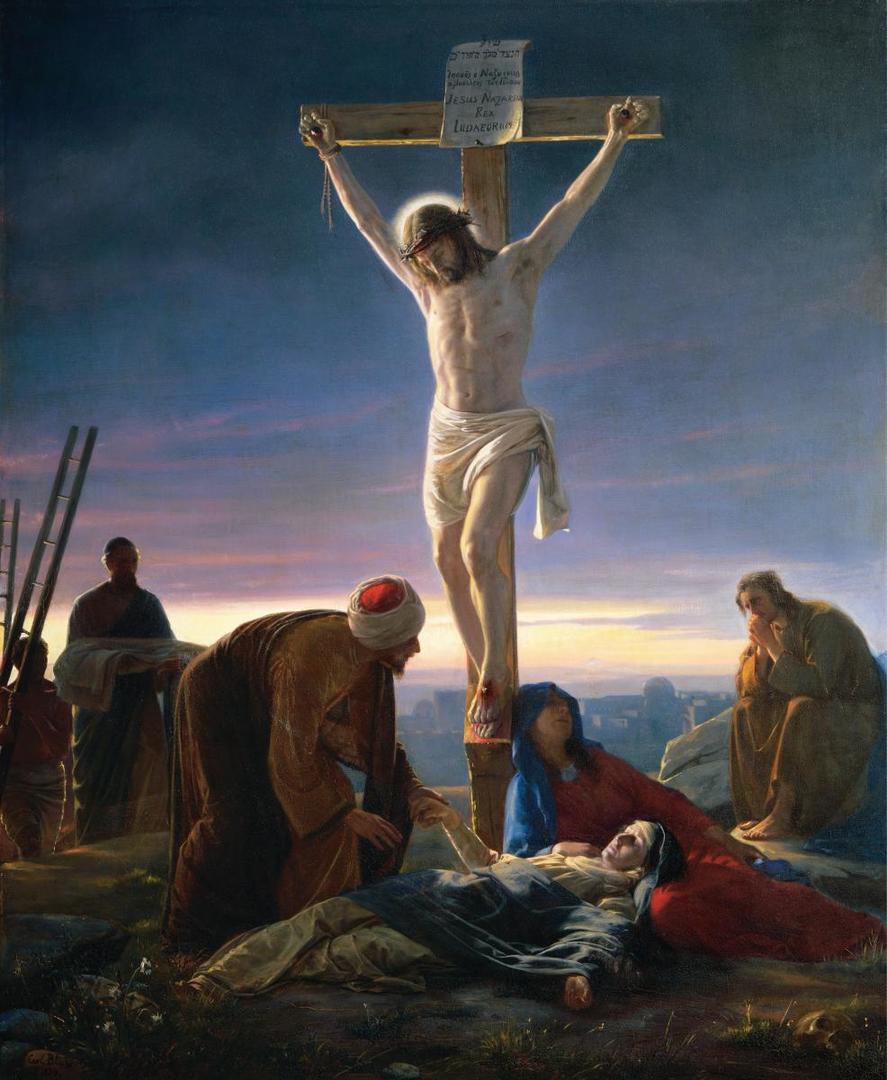
After he dies, Jesus is taken down and placed in his mother's arms.
